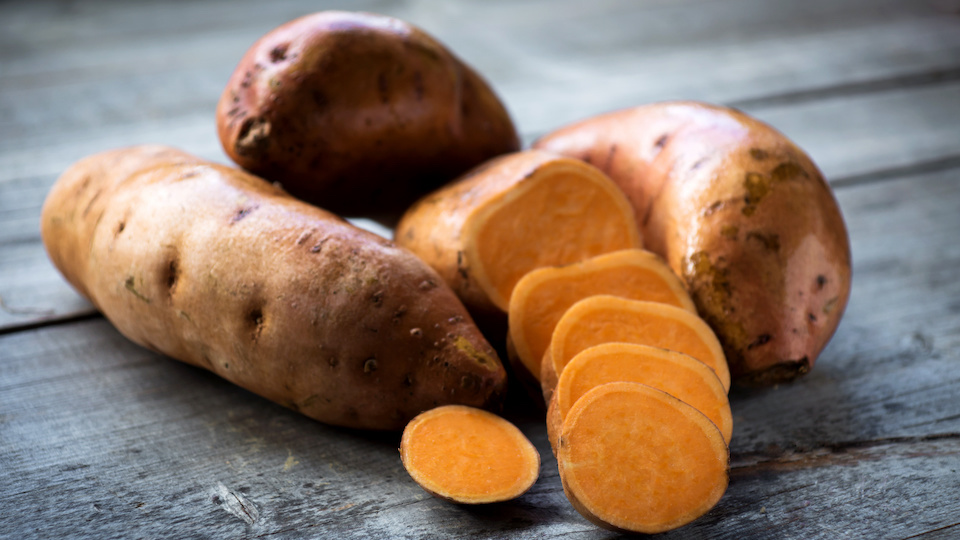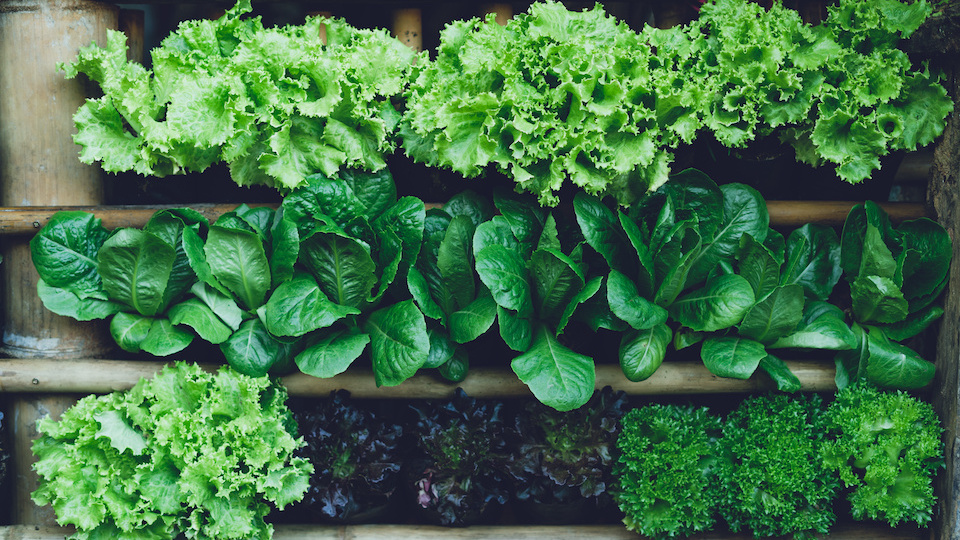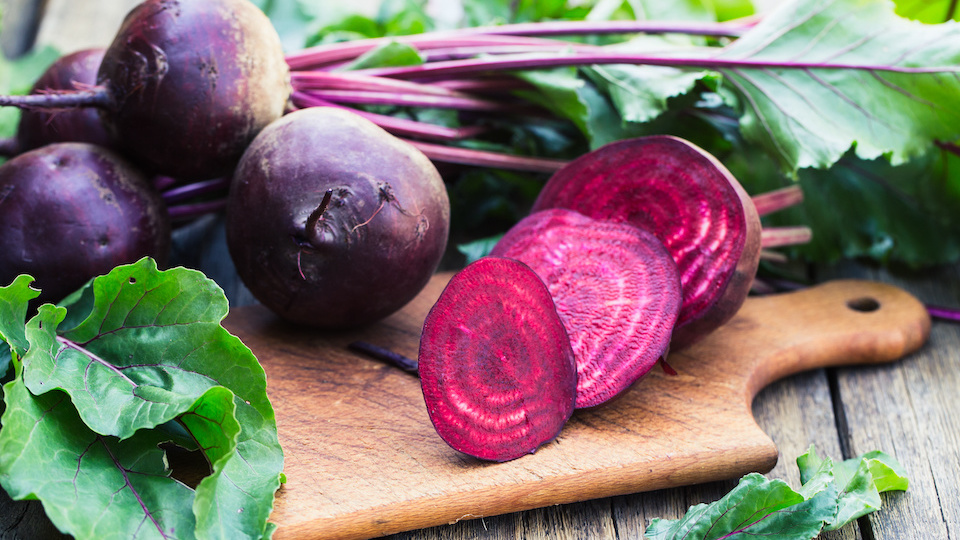Perhaps you have grown theme gardens before like butterfly, tea, salsa, or salad gardens. But have you ever considered growing your very own energy garden? An energy garden is packed with homegrown goodness that can give you just the right amount of energy before a hard workout.
It’s 4 pm, your workday is done, and you head for the gym or your daily jog around the block. You search for the perfect pick-me-up snack to help you power through. Protein bars, smoothies, and energy drinks are common go-to’s for most people. I want to suggest a few alternative ideas. Food you can grow in your garden that is jam-packed with energy-giving properties.
Sweet potatoes

Sweet potatoes are a delicious and nutritious garden favorite. Just one cup of this root vegetable offers 564% of the daily recommended amount of vitamin A, 25 grams of complex carbohydrates, 3.1 grams of fiber, and manganese. Vitamin A is instrumental in the growth and development of the human body – including helping you maintain proper energy levels. It allows cells to make and create all-day energy. Because sweet potatoes contain complex carbohydrates, your body digests them slowly, which provides a steady stream of energy.
Growing: Sweet potatoes grow from slips – the green vines that grow out of sweet potato when it sprouts. These are planted in the ground to create a new sweet potato plant. The best way to start a sweet potato is to grow slips from an organic start potato—plant one slip per square foot once the soil is warm. One potato can produce as many as 15 slips.
Try this: Enjoy a bowl of mashed sweet potatoes, a dollop of organic butter, cinnamon, and some local raw honey one hour before your workout.
Avocados

Avocados are truly a superfood when it comes to energy. They are rich in healthy fats, fiber, and B vitamins. The healthy fats are from monosaturated and polyunsaturated fatty acids that promote optimal blood fat levels and help with the absorption of nutrients. These healthy fats are also stored in the body, where they can be tapped for energy. The fiber in avocados accounts for 80% of their carbohydrates, providing a steady supply of energy.
Growing: Avocados tolerate very little cold and are best grown in warm climates such as those found in southern Florida, Texas, California, and Arizona. The best way to enjoy an avocado tree is to plant a seedling from a nursery. Provide a thick cover of mulch, plenty of regular water, and an organic feed rich in nitrogen, potassium, phosphorous, and zinc.
Try this: Scoop the meat out of an avocado and smash it in a bowl. Drizzle with lemon juice and salt and pepper and enjoy an hour before your workout.
Strawberries

Strawberries are not only a delicious snack but also a natural energy-boosting fruit. One cup of strawberries contains carbohydrates, fiber, natural sugars, and 100% of the recommended daily vitamin C amounts. Strawberries fight inflammation, and their antioxidants may help to reduce fatigue and provide energy.
Growing: Transplant small plants into the garden a few weeks before the last frost date. Berries will be ready to harvest around 30 days after flowers bloom and will produce fruit all season long. Birds love strawberries so protect your plants with a lightweight bird net as the berries open. Alpine strawberries are a favorite and heavy feeders. Provide lots of well-rotted compost to the garden before planting healthy plants.
Try this: Wash and cut a cup of strawberries and place them in a blender with a cup of almond milk and a frozen banana. Blend until smooth, and enjoy an hour before your workout.
Leafy green vegetables

Leafy greens like spinach contain iron, calcium, magnesium, potassium, and vitamins A, C, E, and K. In addition; leafy greens are rich in folic acid fiber and antioxidants. A key symptom of iron deficiency is fatigue, and eating leafy greens helps restore your iron stores while vitamin C helps in the absorption of iron. Additionally, leafy greens assist in making nitric oxide, which opens blood vessels up for better blood flow throughout your body.
Growing: Plant seeds directly into the garden as soon as the soil is workable. Plant a successive crop every two weeks in early spring. Harvest outer leaves as soon as they are big enough to eat. Leave the inner leaves to allow the plant to keep producing. Spinach is a cool-season plant that won’t survive through the hot days of summer. Enjoy it in early spring and plant again in the fall if you live in a climate with a mild winter or provide a cold frame for protection.
Try this: Spinach and egg are the perfect pre-workout energy combination. Smash a hardboiled egg, add some salt and pepper and a cup of chopped spinach. Eat one hour before your workout for a great energy fix.
Beets

Antioxidants found in beets help improve both energy and stamina – two things you need to get through your workout. According to studies, beets improve blood flow. A high concentration of nitrates in beetroots and beetroot juice increases the production of nitric oxide and improves blood – this allows for oxygen transport to tissues which in turn increases energy levels during activity. Beets are also loaded with healthy carbohydrates, fiber, and natural sugar for sustained energy.
Growing: Soak seeds in water overnight to aid in germination. Plant beet seeds ½-inch deep in the soil as soon as it can be worked in the spring. Once seeds have germinated, thin them to 9 per square foot. Harvest once beets have reached the desired size in 40-60 days.
Try this: Slice beets into thin rounds, sprinkle with olive oil, sea salt, and a little apple cider vinegar. Place in a dehydrator and dehydrate for eight hours according to your dehydrator instructions. Grab a handful of chips to munch on during the day and before your workout.
Happy Growing,
Susan Patterson, CBHC and Master Gardener




